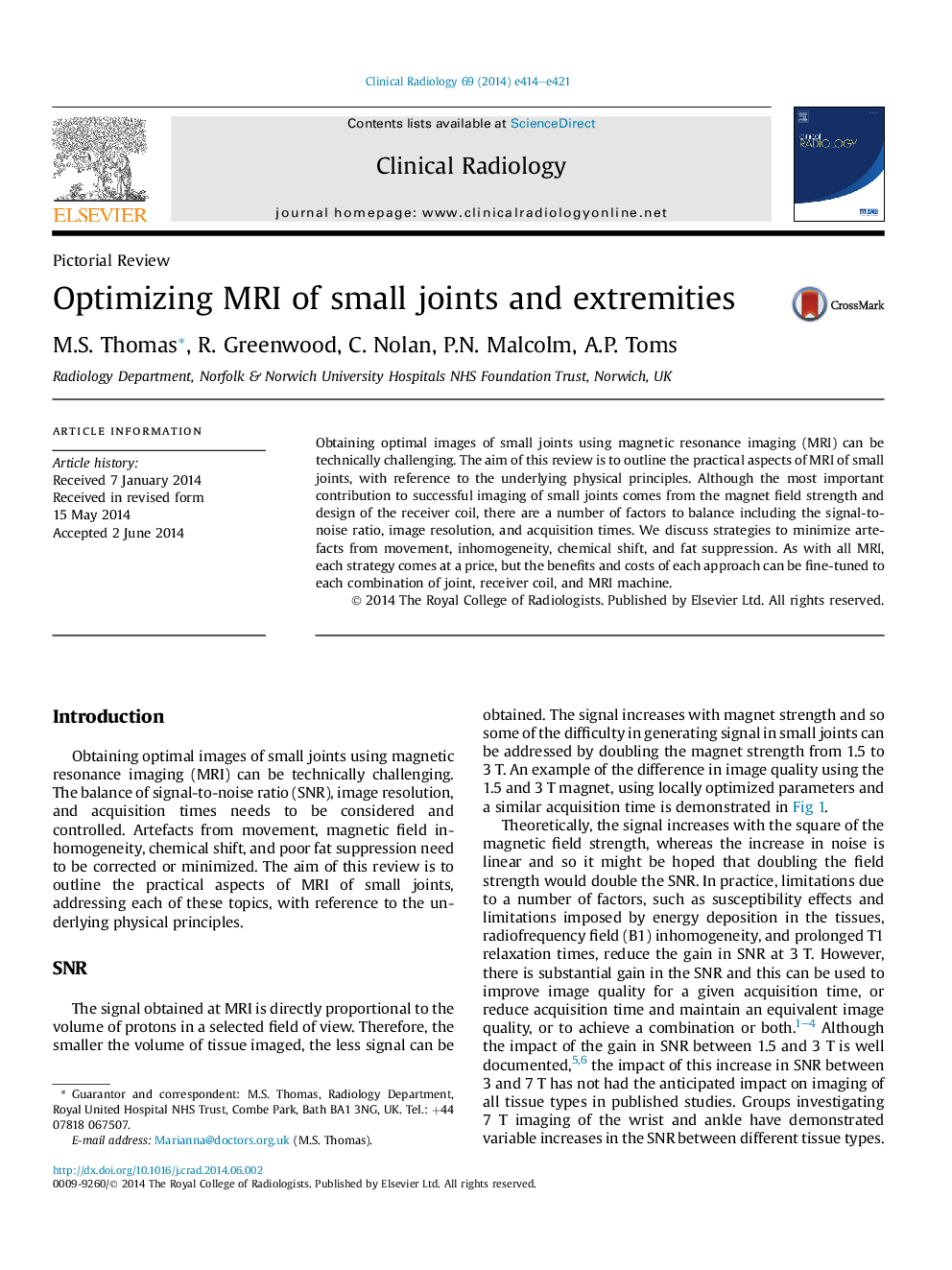| Article ID | Journal | Published Year | Pages | File Type |
|---|---|---|---|---|
| 3981784 | Clinical Radiology | 2014 | 8 Pages |
Obtaining optimal images of small joints using magnetic resonance imaging (MRI) can be technically challenging. The aim of this review is to outline the practical aspects of MRI of small joints, with reference to the underlying physical principles. Although the most important contribution to successful imaging of small joints comes from the magnet field strength and design of the receiver coil, there are a number of factors to balance including the signal-to-noise ratio, image resolution, and acquisition times. We discuss strategies to minimize artefacts from movement, inhomogeneity, chemical shift, and fat suppression. As with all MRI, each strategy comes at a price, but the benefits and costs of each approach can be fine-tuned to each combination of joint, receiver coil, and MRI machine.
